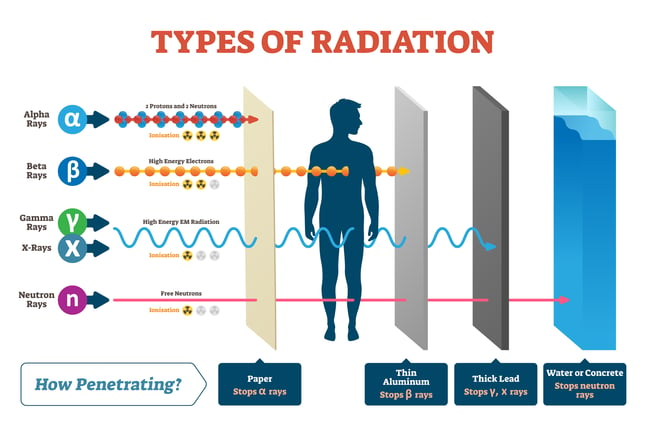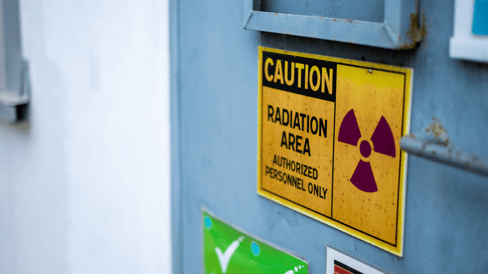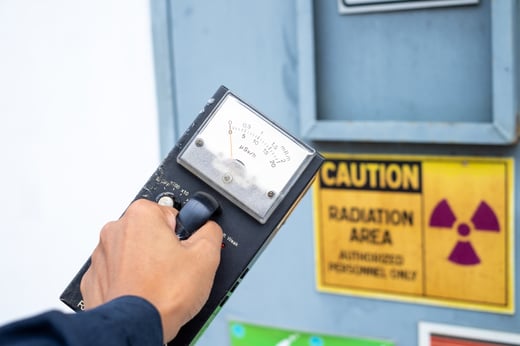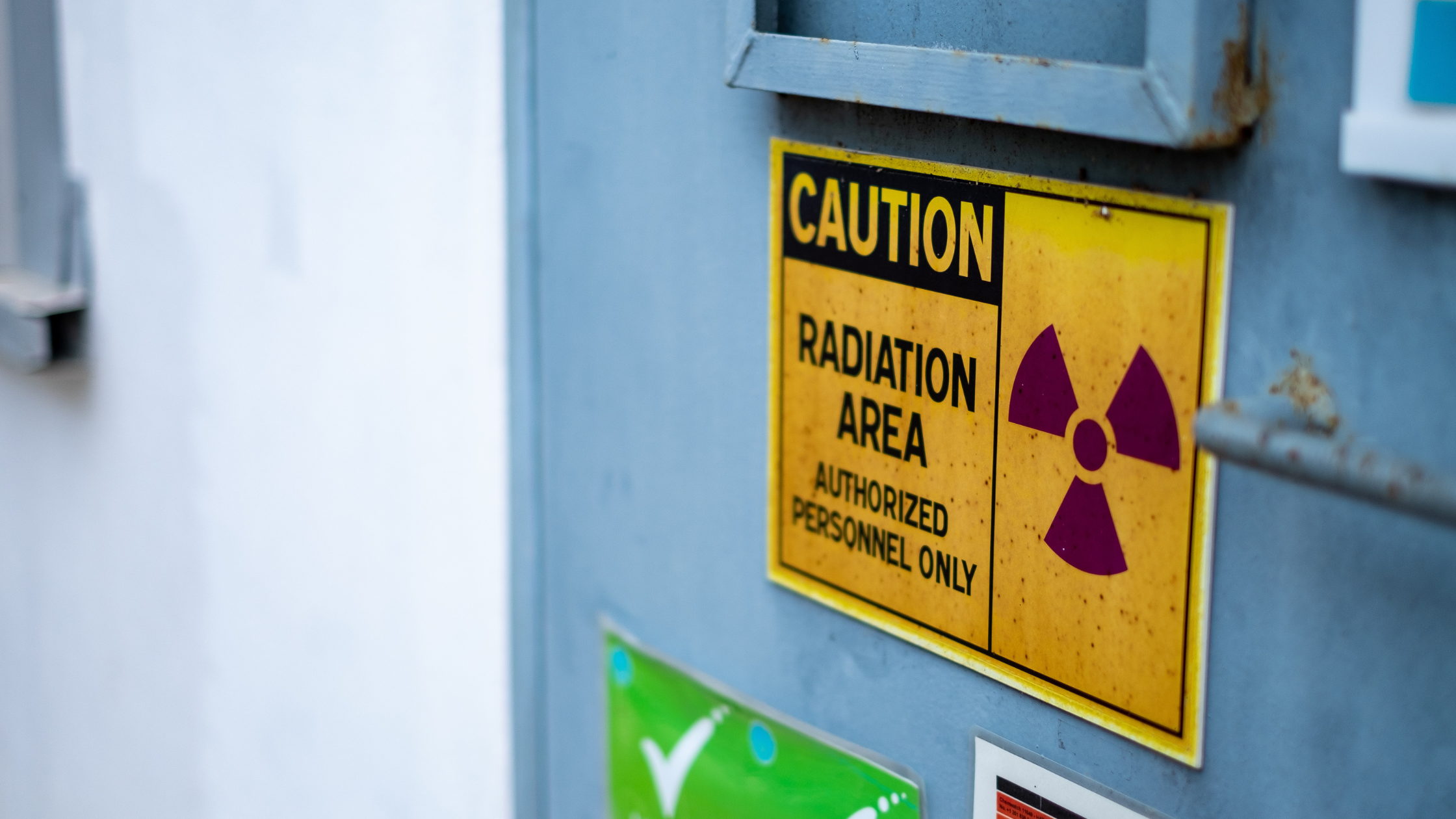For many professionals, the workplace isn’t just a place to earn a living; it’s a realm where cutting-edge technologies and scientific advancements come to life.
However, in fields like healthcare, research, and nuclear power, these advancements often involve radiation – a form of energy that can be incredibly beneficial but also carries inherent risks. This article sheds light on the importance of radiation safety in these environments and the practices that safeguard employees from potential harm.
Understanding the Fundamentals
Radiation exists in various forms, each with unique properties and varying levels of interaction with matter. Understanding these fundamental differences is crucial for effective radiation safety practices. Here’s a breakdown of some common types of radiation encountered in workplaces:
- Alpha Particles: These are large, positively charged particles. They are the least penetrating form of radiation commonly encountered. Alpha particles can be easily stopped by a sheet of paper or even dead skin. However, if alpha-emitting materials are ingested or inhaled, they can damage internal organs.
- Beta Particles: Smaller and lighter than alpha particles, beta particles possess more penetrating power. They can travel several centimeters through the air and can penetrate clothing but are stopped by metal shielding like aluminum. Beta particles can cause skin burns and damage tissues near the body’s surface. High-energy beta particles can also penetrate deeper and pose a greater internal risk if the source is ingested or inhaled.
- Gamma Rays: Unlike alpha and beta particles, gamma rays are not particles but high-energy electromagnetic waves similar to X-rays. Gamma rays are highly penetrating and can travel long distances through air and concrete. Significant shielding materials like lead or concrete are necessary to effectively block gamma rays. Exposure to gamma rays can damage cells throughout the body and increase the risk of cancer.
- X-rays: Similar to gamma rays, X-rays are another form of high-energy electromagnetic radiation. They are used extensively in medical imaging but can also be encountered in research settings. X-rays share many of the same properties and health risks as gamma rays, requiring appropriate shielding measures for protection.
- Neutrons: These neutrally charged particles are another form of radiation emitted by certain radioactive materials and during nuclear reactions. Neutrons are highly penetrating and can travel long distances through materials. Concrete and water are commonly used for shielding against neutrons. Neutron exposure can damage cells throughout the body and increase the risk of cancer.
By understanding the different types of radiation, their properties, and how they interact with matter, employees can better appreciate the potential risks and the importance of implementing appropriate safety measures in their work environment.

The Three Pillars of Radiation Safety
The cornerstone of radiation safety lies in a trio of principles, often referred to as the “time, distance, and shielding” approach. These principles provide a framework for minimizing radiation exposure and protecting workers’ health. Let’s delve deeper into each pillar:
- Time: The concept is simple – the less time spent close to a radiation source, the lower the dose of radiation received. This principle applies across various scenarios. For instance, a radiologist performing an X-ray on a patient will minimize their time in the examination room during the X-ray exposure. Similarly, workers in nuclear power plants may have designated time limits for specific tasks near radioactive materials.
- Strategies for Minimizing Time: Optimizing procedures and workflows to reduce the time spent in radiation areas is crucial. This might involve using remote handling tools to manipulate radioactive materials or scheduling tasks efficiently to minimize time near sources.
- Distance: Radiation intensity weakens with distance. Doubling the distance from a radiation source reduces your radiation dose by a factor of four. This principle is particularly relevant in situations where reducing time spent near a source isn’t entirely feasible. For example, a technician working with a radioactive sample in a lab might use long-handled tongs to manipulate the sample, maximizing their distance from the source.
- Strategies for Maintaining Distance: Utilizing remote handling equipment, installing barriers around radiation sources, and designating specific safe working distances in procedures are all strategies to leverage the protective power of distance.
- Shielding: While time and distance can significantly reduce exposure, they don’t eliminate it entirely. This is where shielding comes into play. Shielding materials, like lead or concrete, act as barriers, absorbing radiation and preventing it from reaching workers. The effectiveness of shielding depends on the type of radiation being blocked:
- Alpha particles: Easily stopped by thin materials like paper or clothing.
- Beta particles: Shielded by aluminum or other denser materials.
- Gamma rays and X-rays: Require significant shielding materials like lead or concrete.
- Neutrons: Concrete or water are commonly used for shielding against neutrons.
- Strategies for Effective Shielding: Selecting the appropriate shielding material for the specific type of radiation encountered is crucial. Shielding can be implemented in various forms, including mobile shields, lab benches with built-in lead barriers, or walls constructed from shielding materials in high-radiation areas.
By effectively implementing these three pillars – time minimization, distance maximization, and appropriate shielding – we can significantly reduce radiation exposure for workers and create a safer work environment.
Knowledge Empowers Protection

Effective radiation safety goes beyond memorizing principles. Equipping employees with a comprehensive understanding of radiation and its associated risks empowers them to make informed decisions and actively participate in safeguarding their health. Here’s a breakdown of key areas covered in radiation safety training:
- Understanding Radiation Effects: Training delves into the potential health consequences of radiation exposure. This includes:
- Acute Radiation Sickness: This occurs at high doses of radiation exposure and can cause a range of symptoms like nausea, vomiting, hair loss, and even death.
- Chronic Health Effects: Lower doses of radiation exposure can increase the risk of developing cancer over time. The risk is cumulative, meaning that repeated exposure over time can have a greater impact.
- Genetic Effects: Radiation exposure can damage reproductive cells, potentially leading to birth defects in offspring.
- Types of Monitoring: Employees should understand the different methods used to monitor radiation exposure:
- Area Monitoring: Workplace radiation levels are monitored using fixed detectors to ensure they remain within safe limits.
- Dosimeters: These electronic badges are worn by employees and measure individual radiation exposure throughout the workday. Dosimeter readings are reviewed regularly to ensure exposure stays below established limits.
- Bioassays: In specific situations, bioassays may be used to measure the presence of radioactive materials inside the body, such as through urine or fecal samples.
- Emergency Preparedness: Training covers protocols for responding to radiation emergencies, such as spills or equipment malfunctions. This includes knowing evacuation procedures, decontamination techniques, and how to use emergency respiratory protection equipment.
- Regulatory Requirements: Employees should be familiar with the relevant radiation safety regulations established by organizations like the Nuclear Regulatory Commission (NRC) or the International Atomic Energy Agency (IAEA). These regulations define safe exposure limits, prescribe specific safety practices, and outline reporting requirements for incidents or accidents.
By equipping employees with this knowledge base, radiation safety training empowers them to:
- Recognize Potential Hazards: Understanding the different types of radiation, their properties, and potential health effects allows employees to identify situations that might pose a radiation risk.
- Work Safely and Efficiently: Knowledge of safety protocols and best practices enables employees to perform their duties efficiently while minimizing their radiation exposure.
- Ask Informed Questions: Employees who understand the fundamentals of radiation safety are more likely to ask questions and voice concerns if they suspect unsafe practices or have doubts about a particular procedure.
- Report Incidents: A culture of safety is fostered when employees feel empowered to report any incidents or near misses related to radiation exposure. This allows for prompt intervention and investigation to prevent future occurrences.

Building a Culture of Safety
Radiation safety isn’t just about individual responsibility; it’s a collaborative effort. Here’s how to cultivate a safety-conscious environment:
- Open Communication: Employees should feel comfortable voicing concerns or reporting any suspected safety issues.
- Regular Monitoring: Workplace radiation levels should be monitored regularly, and employee exposure data from dosimeters should be reviewed and addressed if necessary.
- Ongoing Training: As regulations and best practices evolve, regular refresher training equips employees with the latest knowledge to stay safe.
Radiation is a powerful tool, but like any powerful tool, it requires respect and careful handling. By prioritizing radiation safety training, implementing the principles of time, distance, and shielding, and utilizing appropriate protective measures, we can create work environments where scientific advancements and employee well-being go hand in hand. Remember, a commitment to radiation safety safeguards not just individuals but fosters a culture of responsibility and paves the way for a brighter and healthier future for all.

